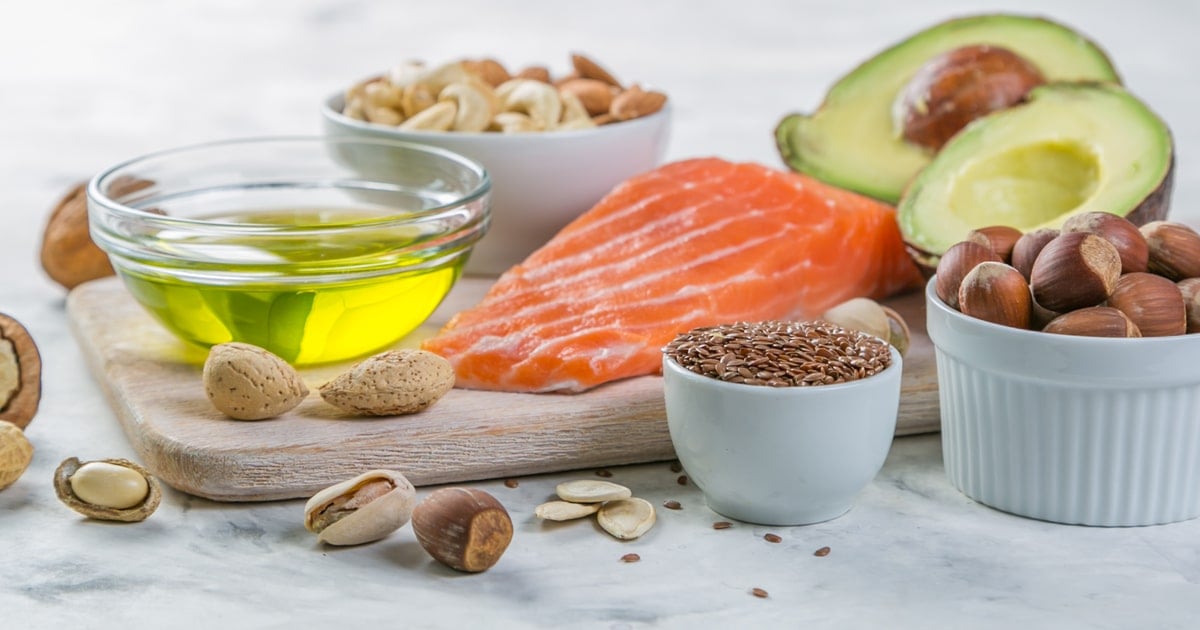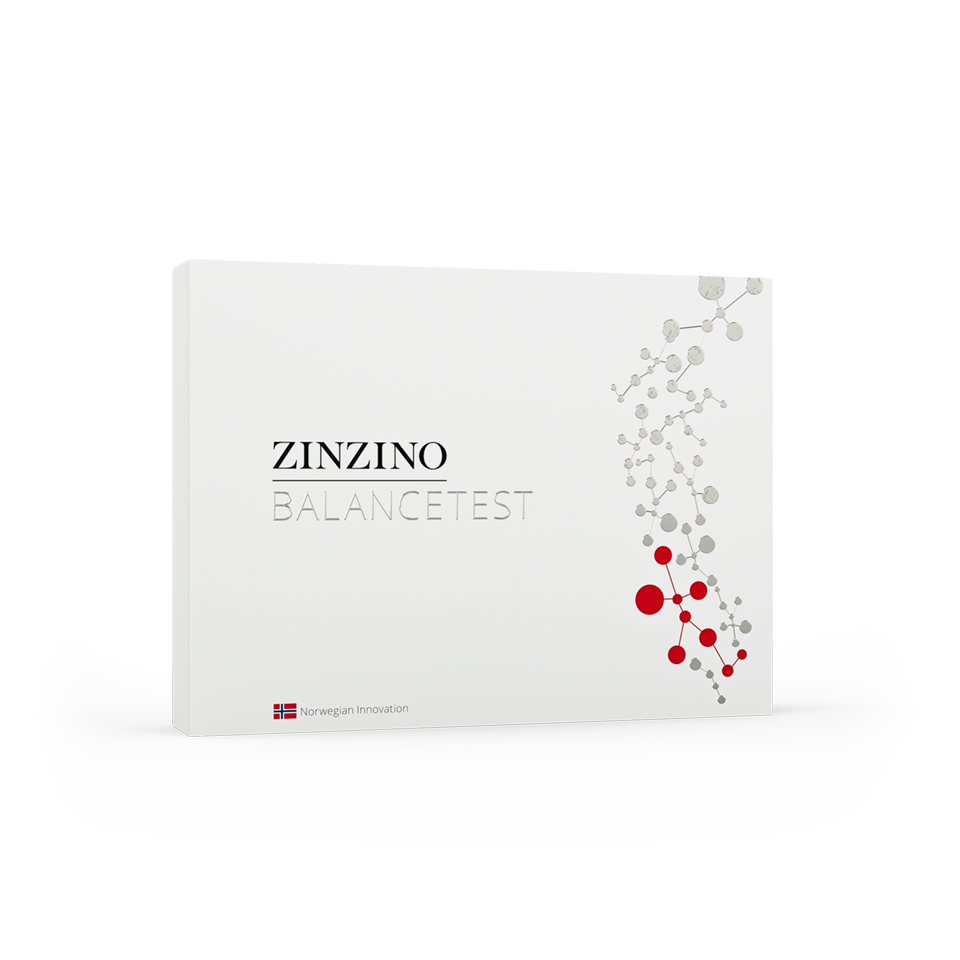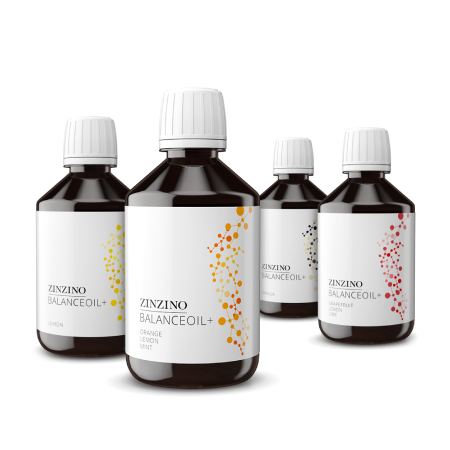Das Verhältnis von Omega-6 zu Omega-3 und warum es für die Gesundheit so wichtig ist

In unserer heutigen modernen Welt essen wir anders als zu Beginn des 20. Jahrhunderts. Damals gab es weder Fast Food noch hochgradig verarbeitete Produkte, die jede Menge Salz, Zucker und Omega-6 enthielten.
Aber auch wenn Sie auf verarbeitete Lebensmittel verzichten und Ihre Speisen selbst zubereiten, haben die Zutaten leider nicht mehr die gleiche Qualität wie früher. Denn das Fleisch stammt in erster Linie von Tieren, die in Ställen gehalten und mit Futtermitteln ernährt werden, statt im Freien zu grasen, während man Fische wie den Lachs in abgeschlossenen Becken heranzieht und mit Fischmehl füttert, statt dass sie in der Tiefsee schwimmen und Algen fressen. All dies wirkt sich massiv auf die Nährwerte unserer Lebensmittel und damit auch auf die Zellen und Gewebe unseres Körpers aus.
Das Verhältnis von Omega-6 zu Omega-3
Wir müssen sowohl Omega-3 als auch Omega-6 über unsere Nahrung aufnehmen, aber wichtig ist dabei, dass die beiden Fettsäuren im richtigen Verhältnis zueinander vorkommen – und bei 90 % der Menschen droht in dieser Hinsicht ein Ungleichgewicht. Diejenigen, die kein zusätzliches Omega-3 zu sich nehmen, laufen Gefahr, dass ihre Balance im schlimmsten Fall auf ein 25:1 Verhältnis ansteigen kann.
Diese Ergebnisse zeigen, dass unsere Nahrung nicht genügend Omega-3 enthält. Die Wissenschaft empfiehlt eine Balance von 3:1 zwischen den essentiellen Fettsäuren Omega-6 und Omega-3 anzustreben.
Der BalanceTest von Zinzino
Der BalanceTest von Zinzino ist ein einfacher Selbsttest, mit dem Sie die Fettsäuren in Ihrem Blut analysieren können, die diejenigen Fette widerspiegeln, die Sie über Ihre Ernährung aufnehmen. Der BalanceTest ist ein Trockenbluttest, der im Hinblick auf die Analyse von Fettsäuren wissenschaftlich als ebenso präzise anerkannt ist wie über eine venöse Blutentnahme.
Alles, was Sie benötigen, sind einige Blutstropfen, die Sie auf ein Whatman-Filterpapier geben. Der Zeitaufwand liegt bei unter einer Minute. VITAS Analytical Services1 testet anschließend anonym die Spiegel der elf Fettsäuren2, die gemeinsam etwa 98 % der Fettsäuren in Ihrem Blut ausmachen. Es handelt sich sowohl um gesättigte als auch um einfach ungesättigte (Omega-9) sowie ungesättigte (Omega-6 und Omega-3) Fettsäuren. Das Ergebnis wird nach ungefähr 20 Tagen auf der Website zinzinotest.com angezeigt, wo Sie auch Informationen zur Balance von Omega-6 und Omega-3, den Omega-3-Spiegel, ein Zellschutzprofil und vieles mehr finden.
Polyphenol Omega BalanceOil+
BalanceOil+ ist ein rein natürliches Nahrungsergänzungsmittel mit ausgewogener Polyphenol-Omega-Balance, das reich an Olivenpolyphenolen, Omega-33 und Vitamin D3 ist. Es reguliert auf sichere Weise den EPA- und den DHA-Spiegel, sorgt für eine Optimierung der Omega-6:3-Balance im Körper und erhält diese positive Wirkung anschließend auch aufrecht. Gleichzeitig schützt es die Zellen vor Oxidation4. Es enthält eine Mischung aus hochwertigen Ölen, die aus kleinen, wild gefangenen Fischen von bester Qualität und kalt gepressten, hochwertigen Oliven aus der Frühernte gewonnen werden.
Rein natürliche Inhaltsstoffe
Das Fischöl, das im BalanceOil+ von Zinzino steckt, stammt hauptsächlich von kurzlebigen, kleinen Hochseefischen, wie Sardinen und Anchovis, und wird aus dem ganzen, unverarbeiteten Fisch gewonnen.
Außerdem verwenden wir kalt gepresstes, extra-natives Olivenöl. Die spanische Picual-Olive wurde aufgrund ihres hohen Omega-9-Gehalts und ihrem sehr hohen Wert an Antioxidantien ausgewählt.
Die Oliven werden vor der eigentlichen Ernte gesammelt und entkernt, sodass nur die Früchte kalt gepresst werden. Das Ergebnis ist ein extra-natives Öl, das reich an Omega-9 (Oleinsäure)5 ist und einen sehr hohen Gehalt (über 750 mg/kg)6 an Antioxidantien (sogenannte Polyphenole) aufweist. Beides wirkt sehr vorteilhaft auf den Körper5. Die Polyphenole schützen nicht nur das BalanceOil+ in der Flasche, sondern insbesondere auch Ihre Zellen4.
BalanceOil+ enthält Vitamin D3. Wir verwenden ein natürliches Vitamin D3 (Cholecalciferol) aus Lanolin. Lanolin ist das natürliche, in Schafwolle enthaltene Fett. Das Vitamin D3 wird durch Auflösung einer Vorstufe des Vitamin D3 aus Lanolin hergestellt. Dieses wird dann chemisch verändert und durch UV-Strahlung aktiviert. Der chemische Prozess ist vergleichbar mit dem Prozess, der in der menschlichen Haut stattfindet, wenn sie Vitamin D3 produziert.
Darüber hinaus enthält unser BalanceOil+ ausschließlich natürliche Aromen.

Die wichtigsten Vorteile des BalanceOil+ von Zinzino
- Trägt zur normalen Gehirnfunktion bei7, da die tägliche Dosis 700 mg DHA enthält
- Trägt zur normalen Herzfunktion bei8, da die tägliche Dosis 1300 mg EPA und 700 mg DHA enthält
- Trägt zu einer normalen Funktion des Immunsystems bei9, da die tägliche Dosis 20 µg Vitamin D3 enthält
- Hilft bei der Aufrechterhaltung optimaler EPA- und DHA-Werte im Körper
- Hilft bei der Erhaltung optimaler Omega-6:3-Werte im Körper
- Hilft bei der Aufrechterhaltung des Polyphenolspiegels im Körper, um die Blutfette vor oxidativem Stress zu schützen4
- Unterstützt durch den Gehalt von 700 mg DHA eine gesunde und normale Funktion der Augen10.
- Trägt zur normalen Funktion von Knochen11, Muskeln12, Zähnen13 und Zellteilung14 bei, da die tägliche Dosis 20 µg Vitamin D3 enthält
- Sorgt für einen normalen Triglyzeridspiegel15, normalen Blutdruck16 und normale Kalziumwerte im Blut17
Wenn das BalanceOil+ 4 Monate lang Bestandteil Ihres persönlichen Gesundheitsplans gewesen ist, können Sie Ihr Blut erneut testen und die aktuellen Werte ermitteln. 95 % der Menschen, die Balance-Produkte von Zinzino einnehmen, liegen nach 120 Tagen bei einem Verhältnis von ungefähr 3:1.
* Diese Aussagen sind nicht von der amerikanischen Food and Drug Administration geprüft worden. Dieses Produkt ist nicht dazu geeignet, eine Erkrankung zu diagnostizieren, zu behandeln, zu heilen oder zu verhindern.
2. The 11 fatty acids are:
Bei den 11 Fettsäuren handelt es sich um: Palmitinsäure (PA), Stearinsäure (SA), Oleinsäure (OA), Linolensäure (LA), Alpha-Linolensäure (ALA), Gamma-Linolensäure (GLA), Dihomo-Gamma-Linolensäure (DHGLA), Arachidonsäure (AA), Eicosapentaensäure (EPA), Docosapentaensäure (DPA), Docosahexaensäure (DHA).
3. Eine Angabe, dass ein Lebensmittel ballaststoffreich ist
Eine Angabe, dass ein Lebensmittel ballaststoffreich ist, sowie jede Angabe, die die gleiche Bedeutung für den Verbraucher hat, kann nur dann gemacht werden, wenn das Produkt mindestens 6 g Ballaststoffe pro 100 g oder mindestens 3 g Ballaststoffe pro 100 kcal enthält.
4. Olive oil polyphenols
Polyphenole aus Olivenöl tragen zum Schutz der Blutfette vor oxidativem Stress bei. Der Ersatz von gesättigten Fettsäuren durch ungesättigte Fettsäuren in der Ernährung trägt zur Aufrechterhaltung eines normalen Cholesterinspiegels im Blut bei. Ölsäure ist eine ungesättigte Fettsäure. Die Angabe darf nur für Olivenöl verwendet werden, das mindestens 5 mg Hydroxytyrosol und dessen Derivate (z. B. Oleuropein-Komplex und Tyrosol) pro 20 g Olivenöl enthält. Um die gesundheitsbezogene Angabe tragen zu dürfen, muss der Verbraucher die Information erhalten, dass sich die positive Wirkung bei einer Tagesdosis von 20 g Olivenöl einstellt.
7. DHA contributes to the maintenance of normal brain
DHA trägt zur Erhaltung einer normalen Hirnfunktion bei. Die Angabe darf nur für Lebensmittel verwendet werden, die mindestens 40 mg DHA pro 100 g und pro 100 kcal enthalten. Um gesundheitsbezogene Angaben machen zu können, muss der Verbraucher die Information erhalten, dass sich die positive Wirkung bei einer Tagesdosis von 250 mg EPA und DHA einstellt. Die Aufnahme von Docosahexaensäure (DHA) durch die Mutter trägt zur normalen Hirnentwicklung des Fötus und des Säuglings bei. Schwangere und stillende Frauen müssen informiert werden, dass sich die positive Wirkung bei einer Tagesdosis von 200 mg DHA zusätzlich zu der empfohlenen Tagesdosis für Omega-3-Fettsäuren für Erwachsene einstellt, d. h. 250 mg DHA und EPA. Die Angabe darf nur für Lebensmittel verwendet werden, die eine Tagesdosis von mindestens 200 mg DHA enthalten.
8. DHA and EPA contribute to the normal function of the heart
DHA und EPA tragen zu einer normalen Herzfunktion bei. Die Angabe darf nur für Lebensmittel verwendet werden, bei denen es sich zumindest um eine EPA- und DHA-Quelle im Sinne der Angabe Omega-3-Fettsäure-QUELLE handelt, wie im Anhang zur Verordnung (EG) Nr. 1924/2006 aufgeführt ist. Um die gesundheitsbezogene Angabe tragen zu dürfen, muss der Verbraucher die Information erhalten, dass sich die positive Wirkung bei einer Tagesdosis von 250 mg EPA und DHA einstellt.
9. Vitamin D contributes to immune system
Vitamin D trägt zur normalen Funktion des Immunsystems bei. Die Angabe darf nur für Lebensmittel verwendet werden, bei denen es sich zumindest um eine Vitamin-D-Quelle im Sinne der Angabe Vitamin-D-QUELLE handelt, wie im Anhang zur Verordnung (EG) Nr. 1924/2006 aufgeführt ist.
10. DHA contributes to the maintenance of normal vision
DHA trägt zur normalen Funktion der Augen bei. Die Angabe darf nur für Lebensmittel verwendet werden, die mindestens 40 mg DHA pro 100 g und pro 100 kcal enthalten. Um gesundheitsbezogene Angaben machen zu können, muss der Verbraucher die Information erhalten, dass sich die positive Wirkung bei einer Tagesdosis von 250 mg EPA und DHA einstellt. Die Aufnahme von Docosahexaensäure (DHA) trägt bei Babys bis zu 12 Monaten zur Entwicklung eines normalen Sehvermögens bei. Der Verbraucher muss die Information erhalten, dass sich die positive Wirkung bei einer Tagesdosis von 100 mg DHA einstellt. Wenn die Angabe auf Folgenahrung verwendet wird, muss das Lebensmittel mindestens 0,3 % der gesamten Fettsäuren als DHA enthalten.
12. Vitamin D normal muscle function
Vitamin D trägt zur Erhaltung einer normalen Muskelfunktion bei. Die Angabe darf nur für Lebensmittel verwendet werden, bei denen es sich zumindest um eine Vitamin-D-Quelle im Sinne der Angabe VITAMIN-D-QUELLE handelt, wie im Anhang zur Verordnung (EG) Nr. 1924/2006 aufgeführt ist.
14. Vitamin D cell division
Vitamin D spielt eine wichtige Rolle bei der Zellteilung. Die Angabe darf nur für Lebensmittel verwendet werden, bei denen es sich zumindest um eine Vitamin-D-Quelle im Sinne der Angabe VITAMIN-D-QUELLE handelt, wie im Anhang zur Verordnung (EG) Nr. 1924/2006 aufgeführt ist.
15. DHA and EPA contribute to the maintenance of normal blood pressure
DHA und EPA tragen zum Erhalt des normalen Blutdrucks bei. Die Angabe darf nur für Lebensmittel verwendet werden, die eine Tagesdosis von 3 g EPA und DHA enthalten. Um die gesundheitsbezogene Angabe tragen zu dürfen, muss der Verbraucher die Information erhalten, dass sich die positive Wirkung bei einer Tagesdosis von 3 g EPA und DHA einstellt. Wenn die Angabe auf Nahrungsergänzungsmitteln und/oder angereicherten Lebensmitteln verwendet wird, muss der Verbraucher die Information erhalten, dass die ergänzende Tagesdosis von 5 g EPA und DHA kombiniert nicht überschritten werden darf.
16. DHA and EPA contribute to the maintenance of normal blood
DHA und EPA tragen zur Aufrechterhaltung normaler Triglyceridwerte im Blut bei. Die Angabe darf nur für Lebensmittel verwendet werden, die eine Tagesdosis von 2 g EPA und DHA enthalten. Um die gesundheitsbezogene Angabe tragen zu dürfen, muss der Verbraucher die Information erhalten, dass sich die positive Wirkung bei einer Tagesdosis von 2 g EPA und DHA einstellt. Wenn die Angabe auf Nahrungsergänzungsmitteln und/oder angereicherten Lebensmitteln verwendet wird, muss der Verbraucher die Information erhalten, dass die ergänzende Tagesdosis von 5 g EPA und DHA kombiniert nicht überschritten werden darf. DHA trägt zur Aufrechterhaltung normaler Triglyceridwerte im Blut bei. Die Angabe darf nur für Lebensmittel verwendet werden, die eine Tagesdosis von 2 g DHA liefern und die DHA in Kombination mit Eicosapentaensäure (EPA) enthalten. Um die gesundheitsbezogene Angabe tragen zu dürfen, muss der Verbraucher die Information erhalten, dass sich die positive Wirkung bei einer Tagesdosis von 2 g DHA einstellt. Wenn die Angabe auf Nahrungsergänzungsmitteln und/oder angereicherten Lebensmitteln verwendet wird, muss der Verbraucher die Information erhalten, dass die ergänzende Tagesdosis von 5 g EPA und DHA kombiniert nicht überschritten werden darf.
17. Vitamin D calcium levels
Vitamin D trägt zu einem normalen Kalziumspiegel im Blut bei. Die Angabe darf nur für Lebensmittel verwendet werden, bei denen es sich zumindest um eine Vitamin-D-Quelle im Sinne der Angabe VITAMIN-D-QUELLE handelt, wie im Anhang zur Verordnung (EG) Nr. 1924/2006 aufgeführt ist.



Diese Seite teilen
Oder Link kopieren